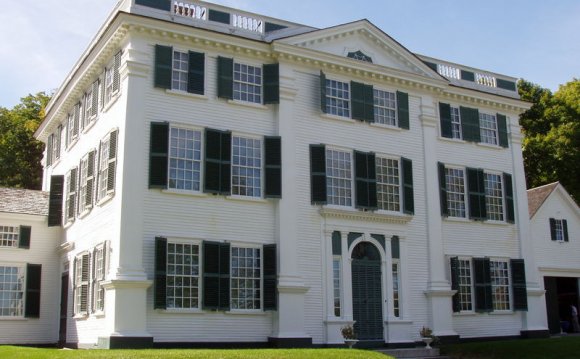
The Federal, or Adam, style dominated the American architectural landscape from roughly 1780 to 1840, having evolved from Georgian, the principal design language of the colonial period. Fundamentally, it was the comparatively progressive European ideas about architecture that prompted this American change in taste. Indeed, many historians today think of the Federal style as merely a refinement of the Georgian style, a view easily justified by a close comparison of the two. In general, the term Federal connotes that period in American history when our Federal system of governance was being developed and honed. More specifically, it refers to the buildings that went up during the ensuing construction boom in which designers readily incorporated styling variants popular in Europe.
Despite the long fight for independence, Americans were highly influenced by Robert Adam (1728–1792), Great Britains most popular architect, whose work, in turn, was heavily indebted to ancient Greek and Roman forms. Nonetheless, to this day its association with Americas hard-won independence lends the Federal style a special cachet with preservationists and architectural aficionados. Federal-style buildings are found in virtually every eastern city, from New Englands seaport towns, where merchant princes grew rich from trade, to Georgetown and Alexandria, Virginia, which were burgeoning in population and importance at about the same time. Easily recognizable Federal-style residences in Greater Washington include Woodlawn Plantation (1805) in Virginia and Tudor Place (1815), and Decatur House (1819), all in the capitol city.
Characteristics
Typically, a Federal-style house is a simple square or rectangular box, two or three stories high and two rooms deep. Some structures have been made larger, modified with projecting wings or attached dependencies, or even both. In some instances, one finds an elaborate curved or polygonal floor plan such as with the Octagon House in Washington DC (1799) located at 18th Street and New York Avenue NW.
In the Rockville historic district, at 103 West Montgomery Avenue, the Beall-Dawson house is an excellent example of Federal style, and exemplifies the shift away from the rigid axial symmetry of the Georgian style. Its asymmetrical arrangement of wings and other dependencies owes as much to function as to form.
Many Federal-style design elements are notably understated. Exterior decoration, for example, is generally confined to a porch or entry element. Compared to a Georgian house, the columns and moldings are narrow and rather simple.
Federal-style decoration often showcases geometrical concepts. Elliptical, circular, and fan-shaped motifs formed by fluted radiating lines are common. One of the oldest American examples of such flourishes is on the dining-room ceiling of Mount Vernon. Executed in plaster, the design contains an ornamental rinceau border festooned by corn husks and a central rosette.
Materials
Not surprisingly, the building materials in Federal-style structures vary with location. The homes of the Northeast were typically clapboard. Southern houses were often brick, as are most of the homes in the urban north, where fireproofing was much desired.
RELATED VIDEO











